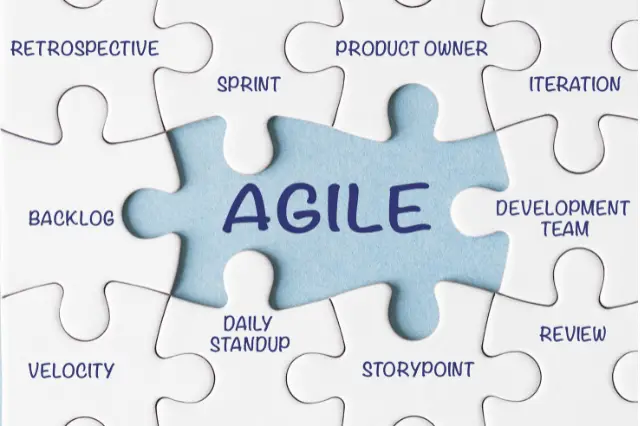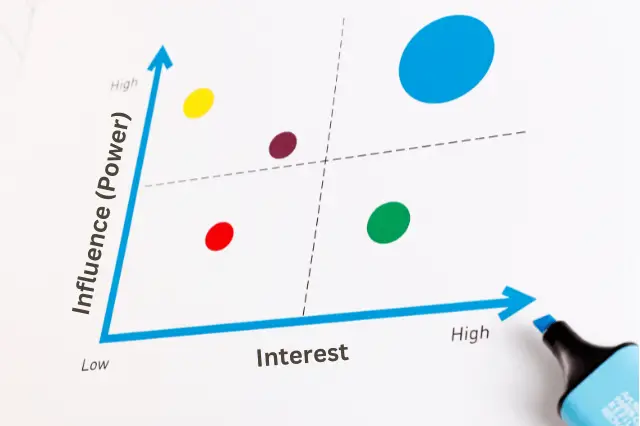Last Updated on November 4, 2025 by andrewshih
Building a project team is one of the most critical responsibilities of a project manager. A well-developed team can lead to successful project outcomes, improved productivity, and a more cohesive working environment.
Let’s start by understanding what a project team is, who the team members are, the common challenges a project manager may encounter, and tips for developing a successful project team.
Disclaimer: PMAspirant is affiliated with Udemy, PM-Prepcast, and Amazon Associate. Please review the full affiliate disclaimer.
What is a Project Team?
A project team is a group of individuals assembled to work collectively on a specific project. Each member brings unique skills, expertise, and perspectives to contribute to the project’s objectives. The team’s primary goal is to achieve the project’s deliverables within the set constraints of time, budget, and quality.
Who are the Project Team Members?
A typical project team includes the following key roles:
Project Manager: The leader responsible for planning, executing, and closing the project. They ensure that the project meets its goals and constraints.
Project Sponsor: A senior executive who provides strategic direction, resources, and support. They are the project’s champion and have the authority to make critical decisions.
Team Members: These are individuals with specific skills and expertise required for the project. They can include engineers, designers, developers, analysts, and other professionals.
Stakeholders: Individuals or groups with an interest in the project’s outcome. They can be internal or external to the organization and include clients, end-users, suppliers, and regulatory bodies.
Common Challenges in Managing a Project Team
Managing a project team comes with its own set of challenges. Here are some common issues project managers may encounter:
-
Communication Breakdowns: Miscommunication can lead to misunderstandings, errors, and conflicts. Ensuring clear, consistent, and open communication is vital.
-
Conflicting Priorities: Team members may have different priorities, especially if they are working on multiple projects. Balancing these priorities requires careful planning and negotiation.
-
Resource Constraints: Limited resources, such as budget, time, or personnel, can hinder project progress. Efficient resource management is crucial to overcoming these constraints.
-
Resistance to Change: Team members may resist changes in processes, technologies, or roles. Managing change effectively and addressing concerns can help mitigate this resistance.
-
Team Dynamics: Diverse personalities and working styles can lead to conflicts or misunderstandings. Fostering a positive team culture and addressing issues promptly can improve team dynamics.
-
Scope Creep: Uncontrolled changes or additions to the project scope can derail the project. Clear scope definition and change management processes are essential to prevent scope creep.
-
Lack of Motivation: Low morale or lack of motivation can affect productivity and quality. Regular recognition, rewards, and opportunities for growth can boost team motivation.
-
Skill Gaps: Team members may lack certain skills required for the project. Providing training and development opportunities can help bridge these gaps.
-
Unclear Roles and Responsibilities: Ambiguity in roles and responsibilities can lead to confusion and inefficiency. Clearly defining and communicating these roles is crucial.
-
Risk Management: Unanticipated risks can disrupt the project. Proactive risk identification, assessment, and mitigation strategies are essential for managing risks effectively.
How to Build a Project Team
With a clear understanding of what a project team is, who the team members are, and the challenges you may face, let’s dive into the steps to develop a strong and cohesive project team:
1. Understand Team Dynamics
Understanding team dynamics is essential for fostering a collaborative environment. Pay attention to individual personalities, strengths, and weaknesses. Utilize tools like the Myers-Briggs Type Indicator (MBTI) or StrengthsFinder to gain insights into your team members. This knowledge will help you assign roles and responsibilities that align with each member’s strengths.
Example/Scenario: You have a diverse team with varying levels of experience and expertise. By conducting a StrengthsFinder assessment, you discover that one team member excels in strategic thinking while another is strong in relationship building. This helps you assign roles that leverage their strengths, enhancing overall team performance.
2. Set Clear Goals and Expectations
Clear goals and expectations are the foundation of any successful project. Ensure that every team member understands the project’s objectives, their individual responsibilities, and the deadlines. Use SMART goals (Specific, Measurable, Achievable, Relevant, Time-bound) to provide clarity and direction.
Example/Scenario: Your team is tasked with developing a new software feature. By setting a SMART goal, such as “Complete the user interface design by the end of Q2, ensuring it meets all usability standards and passes user acceptance testing,” you provide a clear and measurable target for the team.
3. Foster Open Communication
Encourage open and honest communication within your team. Create an environment where team members feel comfortable sharing their ideas, concerns, and feedback. Regular team meetings, one-on-one check-ins, and an open-door policy can significantly enhance communication.
Example/Scenario: During a complex project, team members need to collaborate frequently. By using Slack channels dedicated to different project aspects and holding weekly Zoom check-ins, you ensure that everyone is aligned and any issues are promptly addressed.
4. Provide Training and Development Opportunities
Invest in your team’s growth by offering training and development opportunities. Whether it’s through workshops, online courses, or mentoring programs, continuous learning helps team members enhance their skills and stay motivated. Tailor the training to the needs of your project and the aspirations of your team members.
Example/Scenario: A new project requires your team to use a programming language they are not familiar with. You organize a series of workshops and provide access to online courses on platforms like Udemy, ensuring that team members gain the necessary skills to succeed.
5. Build Trust and Collaboration
Trust is the cornerstone of any successful team. Build trust by being transparent, reliable, and supportive. Encourage collaboration by fostering a team-oriented mindset and providing opportunities for team members to work together on tasks and projects. Team-building activities, both formal and informal, can also strengthen relationships and collaboration.
Example/Scenario: You notice a lack of collaboration between departments. By organizing a team-building retreat that includes problem-solving challenges and collaborative games, you help break down silos and build stronger interdepartmental relationships.
6. Recognize and Reward Achievements
Recognition and rewards are powerful motivators. Acknowledge the hard work and achievements of your team members. Celebrate successes, both big and small, to boost morale and motivation. Recognition can come in many forms, such as public praise, bonuses, or additional responsibilities.
Example/Scenario: A team member goes above and beyond to meet a tight deadline. You publicly recognize their efforts during a team meeting and provide a small bonus as a reward. This not only boosts their morale but also motivates others to strive for excellence.
7. Resolve Conflicts Promptly
Conflicts are inevitable in any team setting. Address conflicts promptly and constructively to prevent them from escalating. Use conflict resolution techniques such as active listening, empathy, and negotiation to resolve issues. Encourage a culture where conflicts are seen as opportunities for growth and improvement.
Example/Scenario: Two team members have a disagreement over the project approach. By facilitating a mediation session where each person can express their concerns and collaboratively find a solution, you resolve the conflict and maintain team harmony.
8. Monitor Team Performance
Regularly monitor and assess your team’s performance. Use key performance indicators (KPIs) to track progress and identify areas for improvement. Provide constructive feedback and support to help your team stay on track and continuously improve.
Example/Scenario: Using a project management tool like Asana, you track each team member’s progress on their tasks. Regular performance reviews and feedback sessions help you identify any issues early and provide the necessary support to keep the project on track.
9. Encourage Innovation and Creativity
Innovation and creativity can drive project success. Encourage your team to think outside the box and bring new ideas to the table. Create a safe space for experimentation and learning from failures. Recognize and reward innovative solutions and creative problem-solving.
Example/Scenario: During a brainstorming session for a new marketing campaign, you encourage all ideas, no matter how unconventional. One team member suggests a social media challenge that turns out to be highly successful, demonstrating the value of fostering creativity.
10. Lead by Example
As a project manager, your behavior sets the tone for the team. Demonstrate the values, work ethic, and attitudes you expect from your team members. Be a role model for collaboration, accountability, and resilience. Leading by example inspires your team to follow suit and contribute positively to the project.
Example/Scenario: When a critical deadline approaches, you work alongside your team, putting in extra hours and staying focused. Your dedication and positive attitude inspire the team to push through challenges and meet the deadline successfully.
Next Step
Developing a project team is a continuous process that requires strategic planning, effective communication, and ongoing improvement.
By understanding team dynamics, setting clear goals, fostering open communication, and offering growth opportunities, you can create a cohesive and high-performing team.
To further enhance your project management skills, consider exploring topics like Resource Breakdown Structure, RACI Chart, and Conflict Management.
FAQ
What tools can I use to foster open communication within my team?
Use communication tools like Slack for instant messaging, Zoom for video conferencing, and Trello for project management to ensure open and effective communication within your team.
What are some effective team-building activities?
Effective team-building activities include icebreaker exercises, problem-solving challenges, social events, and team-building retreats that focus on collaboration and trust-building.
How do I recognize and reward team achievements?
Recognize and reward achievements through public praise, bonuses, career development opportunities, and organizing team outings or retreats. Regular recognition boosts morale and motivation.
How do I select the right team members for my project?
Selecting the right team members involves evaluating the skills, experience, and personalities of potential candidates. Consider conducting interviews, reviewing past project performance, and using assessments like the Myers-Briggs Type Indicator (MBTI) to ensure a good fit for the project needs.
What are some ways to motivate my project team?
Motivating your team can involve a variety of approaches such as setting challenging yet achievable goals, offering recognition and rewards, providing opportunities for professional growth, and creating a positive and inclusive team culture.
How can I handle underperformance in my project team?
Address underperformance by providing clear and constructive feedback, setting specific improvement goals, offering additional training or resources, and regularly monitoring progress. If necessary, consider reassigning roles or responsibilities to better match individual strengths.
How can I ensure my team stays on schedule and meets deadlines?
Ensure your team stays on schedule by setting clear milestones, regularly reviewing progress, using project management software to track tasks and deadlines, and promptly addressing any roadblocks or delays that arise.
What are some techniques for managing remote project teams?
Manage remote project teams effectively by utilizing video conferencing tools like Zoom, setting clear communication guidelines, scheduling regular check-ins, using project management tools like Trello or Asana, and fostering a sense of community through virtual team-building activities.
How do I integrate new team members into an existing project team?
Integrate new team members by providing a comprehensive onboarding process, assigning a mentor or buddy to help them acclimate, clearly communicating their roles and responsibilities, and encouraging open communication to address any questions or concerns they may have.
How can I maintain team morale during challenging phases of a project?
Maintain team morale by being transparent about challenges, providing regular updates and encouragement, recognizing and celebrating small wins, offering support and resources to overcome obstacles, and fostering a positive and resilient team culture.
What are some effective ways to gather and incorporate team feedback?
Gather and incorporate team feedback through regular surveys, one-on-one meetings, team retrospectives, and open forums for discussion. Act on the feedback by implementing changes that address team concerns and suggestions, and communicate these changes back to the team.



